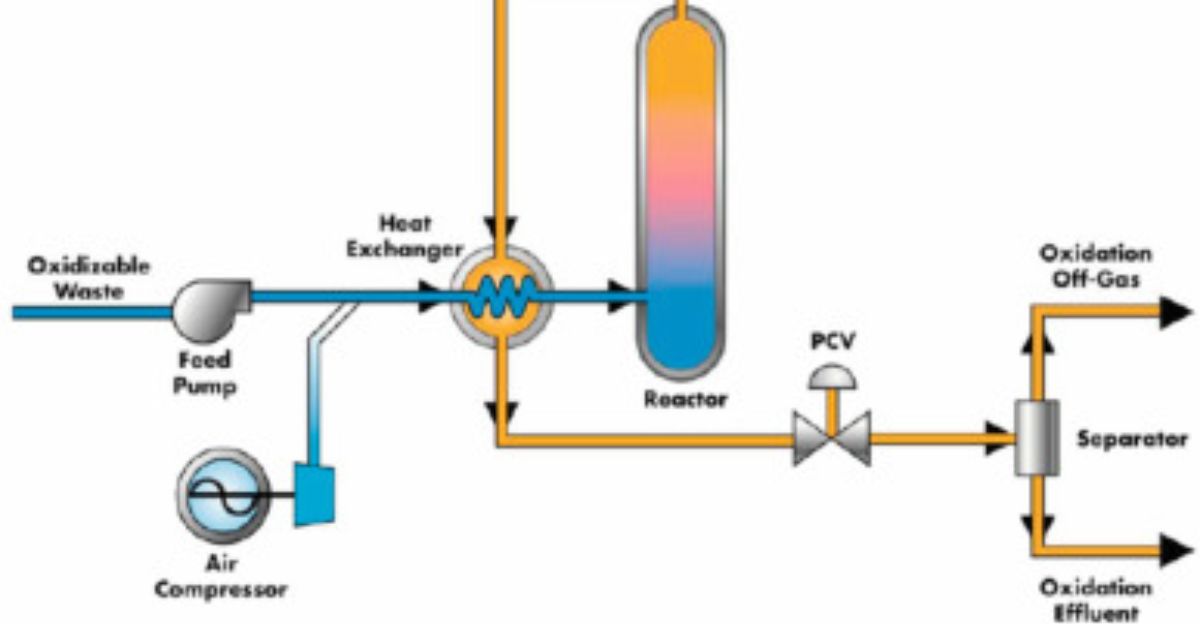
In Burlington, North Carolina, researchers found that PFAS levels were far higher after wastewater treatment than before—an outcome that directly contradicts normal treatment behavior. Duke University’s PFAS network, funded by a $5 million state grant in 2018 to monitor 405 systems, flagged Burlington, Pittsboro, and Chapel Hill as chronic outliers.
In 2025, scientists identified the cause: a textile plant was sending fluorinated polymer nanoparticles into the sewer. Burlington’s Zimpro process transformed them into regulated PFAS at levels roughly three million times higher than EPA drinking-water limits. Once the plant changed its process, PFAS levels collapsed, proving direct causation.
The Invisible Chemistry: Nanoparticles Outside Regulation

The textile facility was not discharging the classic PFAS compounds regulators typically measure. Instead, it released solid, colloidal side-chain fluorinated polymer nanoparticles used in stain- and water-repellent finishes. These particles stay suspended in wastewater but remain invisible to standard PFAS assays that focus on dissolved molecules.
Even Duke’s advanced mass-spectrometry tools failed to detect them for years. Only when researchers deliberately changed their methods did the particles appear. This revealed a major regulatory blind spot: if North Carolina’s elite network missed this source, most states likely are missing similar discharges.
The Numbers: 12 Million PPT and Laboratory Spikes

The scale of contamination was unprecedented. Precursor concentrations in Burlington’s sewer approached 12 million parts per trillion, while EPA drinking-water limits are measured in single-digit parts per trillion. In laboratory simulations, Duke researcher Patrick Faught ran wastewater through a Zimpro-like process.
PFAS levels surged by 50,000 to 80,000 percent after thermal transformation, contaminating lab instruments for more than a week. This experiment confirmed that transformation—not direct discharge—was the dominant driver. The magnitude of the increase revealed a structural flaw in conventional PFAS risk assessment.
How Treatment Became an Amplifier: Zimpro as a PFAS Reactor

Burlington’s Zimpro system uses heat and pressure to break down waste, but that same energy fractured fluorinated polymer side-chains into small, mobile PFAS molecules that are persistent and bioavailable. When the Zimpro process was turned off, PFAS levels in treated effluent dropped sharply, even though precursor material kept entering the system.
The plant shifted from manufacturing dissolved PFAS to moving precursors into sludge. This confirmed that treatment configuration—not just industrial discharge—was a central causal mechanism in contamination.
Molecular Detective Work: Finding the Hidden Source

For months, researchers sampled upstream using standard PFAS methods and found no source large enough to explain Burlington’s readings. Dissolved precursors were far too low. The breakthrough came when scientists simulated treatment conditions before analysis. One textile manufacturer’s wastewater suddenly produced massive PFAS spikes under Zimpro-like conditions.
Subsequent filtration and centrifugation isolated insoluble nanoparticles that matched fluorinated polymer textile treatments identified with help from NC State collaborators. The discovery showed that the polluter was not merely hidden—it was analytically invisible under existing regulatory science.
Biosolids as Slow-Release PFAS Reservoirs

Burlington, like most U.S. utilities, distributes wastewater sludge as agricultural biosolids. PFAS precursor nanoparticles accumulated in this sludge and were spread across farmland. Over years to decades, these materials slowly degrade into soluble PFAS that leach into groundwater, streams, and crops.
This explains why Chapel Hill—outside the direct effluent pathway—still showed elevated PFAS: biosolids-amended fields in its watershed became diffuse sources. Even after industrial discharges stopped, contamination embedded in soils continues releasing PFAS long into the future.
Human Exposure: From River to Bloodstream

Pittsboro draws its drinking water from the Haw River downstream of Burlington. Duke’s PFAS Exposure Study confirmed that residents had higher PFAS blood levels than reference populations.
Chronic exposure is linked to kidney and testicular cancer, immune suppression, thyroid disease, pregnancy-induced hypertension, and elevated cholesterol. Many PFAS persist in the body for years. With contaminated drinking water, food grown on biosolids-treated soil, and environmental loading, multi-pathway exposure likely affected hundreds of thousands of people across the Haw and Cape Fear basins over more than a decade.
Regulatory Blind Spot: Testing the Wrong Chemical

The core regulatory failure lies in what agencies choose to measure. EPA and most state programs test for a short list of known PFAS, not for precursor particles that later transform into regulated compounds. Burlington’s textile facility could legally discharge huge precursor loads while appearing compliant. Dangerous PFAS were created only after treatment.
Even North Carolina’s advanced PFAS network initially missed the source because colloidal nanoparticles fell outside routine analytical frameworks. The system was calibrated to detect known threats, not chemical behavior under real treatment conditions.
Identifying the Industrial Contributors

Once the transformation mechanism was confirmed, investigators worked with Burlington’s pretreatment authority to identify sources. At least three industrial contributors were confirmed. The primary nanoparticle precursor source was Elevate Textiles.
Additional contributors included Unichem and Shawmut. Under regulatory and legal pressure, Unichem eliminated PFAS-containing products at its Burlington facility, while Shawmut committed to phased reductions. Litigation settlements helped secure these changes, effectively halting new PFAS loading to the Haw River—though past contamination remains embedded in soil and sediments.
Historical Context: From GenX to Statewide Detection

The Burlington discovery grew out of North Carolina’s earlier PFAS crisis. In 2015, GenX contamination in the Cape Fear River near Chemours sparked statewide alarm. In response, lawmakers funded a $5 million PFAS testing network in 2018 to monitor 405 public drinking-water systems.
That program revealed persistent hotspots in the Haw River basin, including Pittsboro and Burlington. Blood-level studies confirmed elevated human exposure. Without the GenX shock and the resulting monitoring infrastructure, Burlington’s nanoparticle crisis would likely have remained undetected.
Technical Breakthrough: A New Detection Framework

The case forced a fundamental shift in detection strategy. Instead of measuring wastewater as a static snapshot, researchers applied heat and pressure first to simulate plant conditions before analysis. This transformation-based method revealed how much PFAS would be generated during treatment.
Isolation of side-chain fluorinated polymer nanoparticles—published in Environmental Science & Technology Letters in 2025—confirmed a major previously unrecognized PFAS source in wastewater and biosolids. The work demonstrated that PFAS monitoring must account for chemical evolution, not just immediate chemical presence.
Accountability and Long-Term Costs

Responsibility is legally complex. Textile manufacturers discharged materials that were not regulated at the time. Utilities operated treatment systems under valid permits. Farmers applied biosolids under EPA-approved programs.
Yet health costs, property devaluation, and agricultural risks are now borne by residents and landowners. Large-scale soil remediation remains technically impractical and economically prohibitive. Litigation is likely to push state and federal agencies toward long-term mitigation funding. The case illustrates how regulatory compliance can still create multi-decade environmental liability.
National Implications: Burlington Is Unlikely to Be Unique

Textile treatments, fluoropolymer coatings, and surface chemistry are widespread across U.S. manufacturing regions. Many utilities operate thermal and oxidative treatment systems capable of transforming precursors into PFAS.
Biosolids are land-applied in nearly every state. Given this overlap, it is statistically implausible that Burlington is the only place where transformation-driven PFAS amplification has occurred. What makes North Carolina different is not risk—it is detection capacity. Similar precursor-driven contamination may exist undetected in many other industrial watersheds.
Policy Lessons That Follow Directly from the Science

Several corrective actions follow directly from Burlington’s documented failures. PFAS regulation must expand beyond a short compound list to include precursor screening. Wastewater permits must evaluate whether treatment processes can generate PFAS from precursors.
Biosolids programs should incorporate PFAS and precursor thresholds with full disclosure to farmers. Long-term health surveillance is needed in impacted communities such as Pittsboro and Chapel Hill. These steps do not represent regulatory expansion for its own sake—they simply align policy with known transformation chemistry.
A System Designed to Miss Its Biggest Threats

Burlington proves that a facility can be legally compliant while flooding a sewer system with invisible precursors that become highly regulated toxins only after treatment.
It shows that advanced technology can amplify contamination, that biosolids can turn farmland into slow-release PFAS reservoirs, and that even elite monitoring networks can overlook the largest sources when regulation defines what they can see. Unless PFAS policy pivots toward precursor control and transformation chemistry, Burlington will not remain an outlier—it will become the first fully documented case of a much broader national problem.
Sources:
Duke University Pratt School of Engineering – “Uncovering the Source of Widespread ‘Forever Chemical’ Contamination in North Carolina”
LabCompare – “Source of Widespread PFAS Contamination Discovered in North Carolina”
IFLScience – PFAS discovery in North Carolina’s Piedmont region
Duke PFAS Exposure Study – NC Piedmont drinking water and blood levels
NC Health News – Pittsboro residents’ PFAS blood levels
NIEHS – PFAS health effects overview
ACS Environmental Science & Technology Letters – research on colloidal side-chain fluorinated polymer nanoparticles
Waterkeepers Carolina – “Forever Chemicals (PFAS) in NC Waterways”